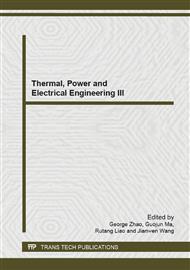p.1189
p.1194
p.1198
p.1203
p.1207
p.1214
p.1225
p.1230
p.1237
Application of Discrete Spectrum Correction Technology for Induction Motor Rotor Fault Diagnosis
Abstract:
The extraction method of induction motor’s fault character based on coordinate transformation could restrain the influence of fundamental component leakage by translating fundamental component into DC component. The amplitude of the fault character frequency component was inaccurate by spectrum analysis taking no account of the leakage of itself. So rotor fault diagnosis method of induction motor based on discrete spectrum correction technology is proposed. This method which did not depend on spectral function of the window function improved the traditional phase difference correction method, and the stator current signal analysis by means of an appropriate window function is performed to reduce the interference between each frequency. The proposed method could detect the existence of fault character frequency component and its frequency and amplitude. The simulation and experimental results indicated that using this method could get better precision of frequency and amplitude of the fault character frequency component.
Info:
Periodical:
Pages:
1207-1213
Citation:
Online since:
June 2014
Authors:
Price:
Сopyright:
© 2014 Trans Tech Publications Ltd. All Rights Reserved
Share:
Citation:


